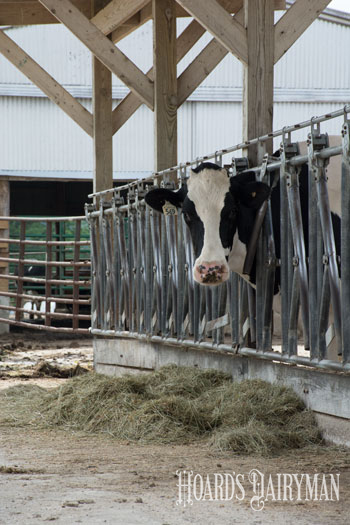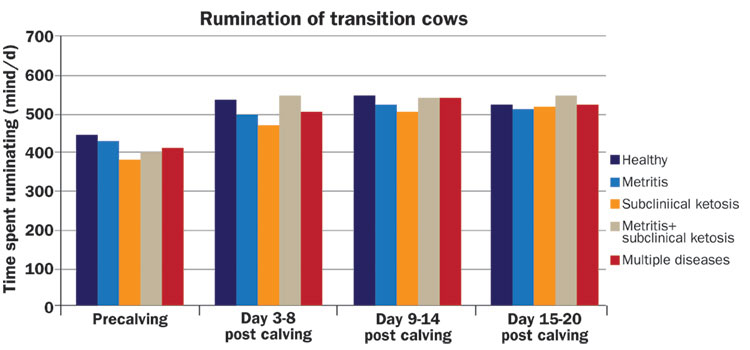
Cows in the transition period have a target placed squarely on their backs when it comes to vulnerability to disease. Research indicates we are closer than ever to helping cows before health deteriorates.
A recent study from the University of British Columbia suggests both rumination monitoring and recording of feeding behavior are effective in gathering data for preventive health care.
The Canadian researchers monitored both rumination and feeding behavior in the period leading up to calving as well as the three weeks following it. They also recorded health incidents.
Precalving, healthy cows spent on average 18 to 29 percent more time feeding than cows with subclinical ketosis, cows with metritis and subclinical ketosis, and cows presenting multiple health issues. That trend continued following calving with healthy cows eating at a rate of 13 to 25 percent more than ill cows.
Not only were feeding rates higher for healthy cows, but also those same cows were more likely to make more visits to the feeding area at a rate of 18 to 40 percent more often than ill cows.

You can see from the graph above that rumination is also significantly variable depending on disease prevalence before and after calving.
Sick transition cows tend to avoid eating much like humans with a stomachache or head cold. Preventative treatment then is all about getting out in front of these conditions and getting cows eating again as soon as possible.
Getting a jump on preventative treatment then means boosting lactation potential and getting cows off to the best start.
To comment, email your remarks to intel@hoards.com.








